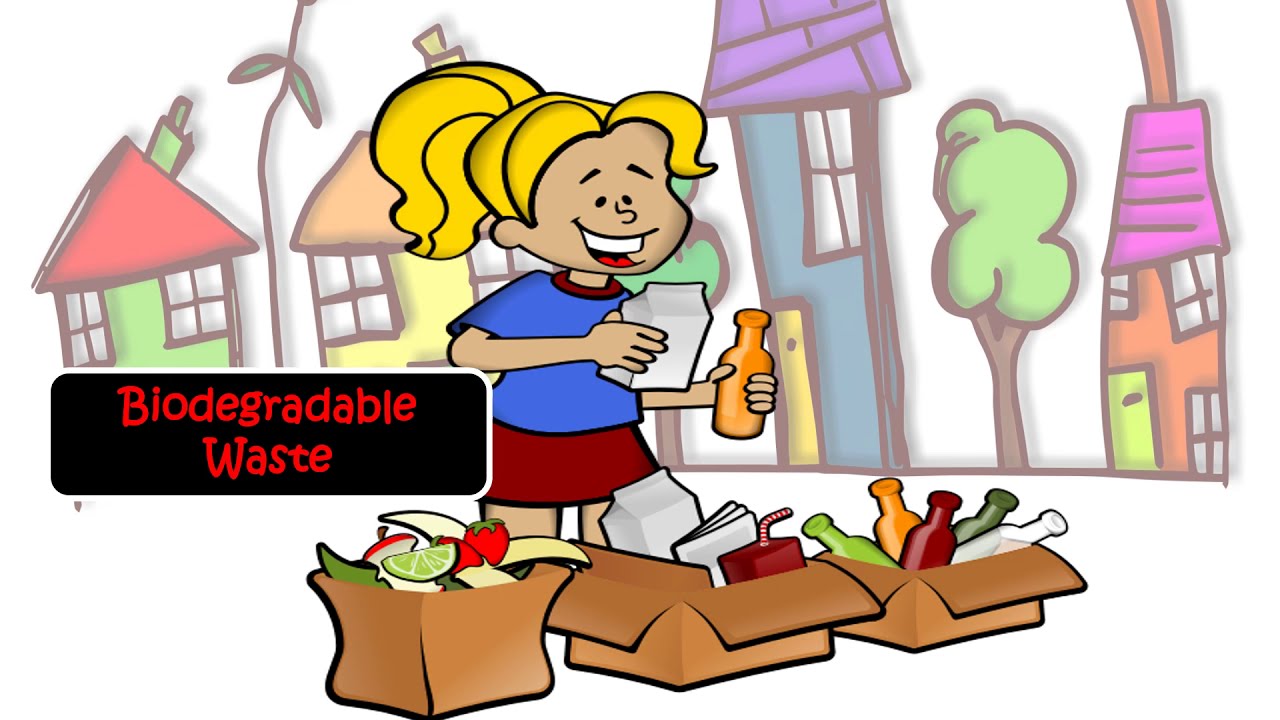As our society becomes more environmentally conscious, the need for sustainable waste management practices has become increasingly important. One solution that has gained popularity in recent years is biodegradable garbage. This innovative approach to waste disposal offers numerous benefits for both individuals and the planet as a whole. In this article, we will delve into the world of biodegradable garbage, discussing its definition, usage, examples, comparisons, and advice for optimal implementation.
What is Biodegradable Garbage?

Biodegradable garbage refers to any type of waste that can be decomposed by natural processes, such as bacteria, fungi, or other microorganisms, into harmless substances like water, carbon dioxide, and compost. This process is known as biodegradation, and it occurs when organic materials are broken down by living organisms in the presence of oxygen. In contrast, non-biodegradable waste does not decompose and remains in the environment for an extended period, leading to pollution and harm to ecosystems.
How Does Biodegradation Work?
Biodegradation is a complex process that begins with the breakdown of large molecules, such as proteins, carbohydrates, and fats, into smaller units. These units are then further broken down by specialized microorganisms called decomposers, which use enzymes to convert them into simpler compounds. Finally, these compounds are converted into energy, water, and carbon dioxide, leaving behind only harmless substances.
Types of Biodegradable Garbage
There are two main types of biodegradable garbage: plant-based and animal-based. Plant-based biodegradable garbage includes organic materials like leaves, grass, food scraps, and paper products. Animal-based biodegradable garbage consists of waste from animals, such as manure and carcasses.
Why is Biodegradable Garbage Important?

Environmental Benefits
One of the primary reasons biodegradable garbage is gaining traction is its numerous environmental benefits. By using biodegradable materials, we decrease the amount of waste that ends up in landfills, thus reducing pollution and its adverse effects on our planet. Additionally, biodegradation produces fewer greenhouse gases, such as methane, compared to non-biodegradable waste, leading to a lower carbon footprint.
Comparison with Traditional Waste Disposal Methods
Traditional waste disposal methods, such as incineration and landfilling, are detrimental to the environment as they emit harmful gases and substances into the atmosphere. Moreover, these methods require an extensive infrastructure and resources, making them costly and unsustainable in the long run. In contrast, biodegradable garbage can be easily disposed of in home composting systems or sent to municipal compost facilities, where it is transformed into nutrient-rich fertilizer for plants.
Economic Benefits
Aside from its environmental advantages, biodegradable garbage also offers economic benefits. It reduces the cost of waste management by eliminating the need for specialized equipment and processes required for traditional waste disposal methods. Moreover, biodegradable materials can be used to create new products, leading to a more circular economy and reduced resource depletion.
How to Use Biodegradable Garbage?

There are several ways to incorporate biodegradable garbage into our daily lives:
Composting
Composting is the most common way to use biodegradable garbage. It involves collecting organic materials like food scraps, paper, and yard waste, and placing them in a compost bin or pile. The materials then break down over time, producing nutrient-rich soil that can be used to fertilize plants.
Biodegradable Products
Another way to use biodegradable garbage is by purchasing products made from biodegradable materials. These products include bags, packaging materials, and even clothing. Using biodegradable products decreases the amount of waste that ends up in landfills and promotes a more sustainable lifestyle.
Municipal Composting Facilities
Municipalities in many countries have introduced composting facilities to manage biodegradable waste on a larger scale. These facilities use specialized equipment to break down organic materials quickly and efficiently, producing high-quality compost for agricultural use.
Examples of Biodegradable Garbage

Some common examples of biodegradable garbage include:
- Food scraps (fruits, vegetables, meat, etc.)
- Paper products (newspapers, cardboard, paper towels, etc.)
- Yard waste (leaves, grass clippings, etc.)
- Animal waste (manure)
How Does Biodegradable Garbage Compare to Non-Biodegradable Waste?

Non-biodegradable waste includes materials like plastics, metals, and glass that do not decompose naturally, leading to long-lasting pollution. Here are some key differences between biodegradable and non-biodegradable waste:
Decomposition Time
Biodegradable waste takes significantly less time to decompose compared to non-biodegradable waste. While it can take centuries for non-biodegradable waste to break down, biodegradable waste typically decomposes within a few months to a few years.
Environmental Impact
The decomposition process of biodegradable waste produces fewer greenhouse gases and is less harmful to the environment compared to the incineration and landfilling of non-biodegradable waste.
Disposal Methods
While biodegradable waste can be easily disposed of through composting or municipal facilities, non-biodegradable waste requires specialized processes and equipment, making its disposal more complicated and expensive.
FAQs About Biodegradable Garbage
Q: Can all types of garbage be biodegraded?
A: No, only organic materials can be biodegraded. Non-biodegradable materials, such as plastics and metals, cannot be broken down by natural processes.
Q: Is biodegradable garbage safe for the environment?
A: Yes, biodegradable garbage is beneficial for the environment as it decreases pollution and reduces our carbon footprint.
Q: Can I use biodegradable garbage to create compost at home?
A: Yes, you can collect your food scraps and yard waste to create nutrient-rich compost in your backyard.
Q: How long does it take for biodegradable garbage to decompose?
A: It varies depending on the type of material and environmental conditions, but biodegradable waste typically takes a few months to a few years to decompose.
Q: Can I recycle biodegradable products?
A: No, biodegradable products cannot be recycled. They must be properly disposed of through composting or sent to municipal facilities.
Conclusion
Biodegradable garbage offers numerous benefits for the environment, economy, and society. Its usage promotes sustainable waste management practices and decreases pollution and resource depletion. By incorporating biodegradable materials into our daily lives, we can contribute to the preservation of our planet and ensure a greener future for generations to come.